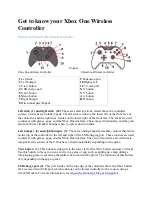
82
Attached functions
:
[Sensor correction]
Corrects sensor input value.
[Set value lock]
:
Lock 1, Lock 2, Lock 3, Lock 4
[Auto/Manual control switching]
Auto/Manual control can be switched using the
key in PV/SV Display Mode.
[Program control function]
Number of steps: 15
Program control starts or stops with the
key.
If Pattern end output is selected in [Event output allocation] (pp. 35, 36), the Event
output to which Pattern end output is allocated is turned ON when program is finished.
Advance function
: If the
key is pressed for 1 second during program control, it
interrupts the performing step, and proceeds to the next step.
[SV ramp function]
When the SV is adjusted, it approaches the new SV by the preset rate-of-change
( /minute, /minute).
When the power is turned on, the control starts from the PV and approaches the SV
by the rate-of-change.
[Power failure countermeasure]
The setting data is backed up in the non-volatile IC memory.
[Self-diagnosis]
The CPU is monitored by a watchdog timer, and if an abnormal status occurs, the
controller is switched to warm-up status, turning all outputs OFF.
[Automatic cold junction temperature compensation] (only thermocouple input type)
This detects the temperature at the connecting terminal between the thermocouple and
the instrument, and always maintains it at the same status as if the reference junction
location temperature were at 0 (32 ).
[Burnout]
If the thermocouple or RTD input is burnt out, control output is turned OFF and the PV
display flashes [
].
However, for the manual control, the preset MV is output.
If DC voltage or current input is disconnected, PV Display flashes [
]
for 4 to 20 mA DC and 1 to 5 V DC inputs, and flashes [
] for 0 to 10 mV DC,
-10 to 10 mV DC, 0 to 50 mV DC, 0 to 100 mV DC, 0 to 1 V DC.
For 0 to 20 mA DC, 0 to 5 V DC and 0 to 10 V DC inputs, the PV Display indicates the
value corresponding with 0 mA or 0 V input.















































